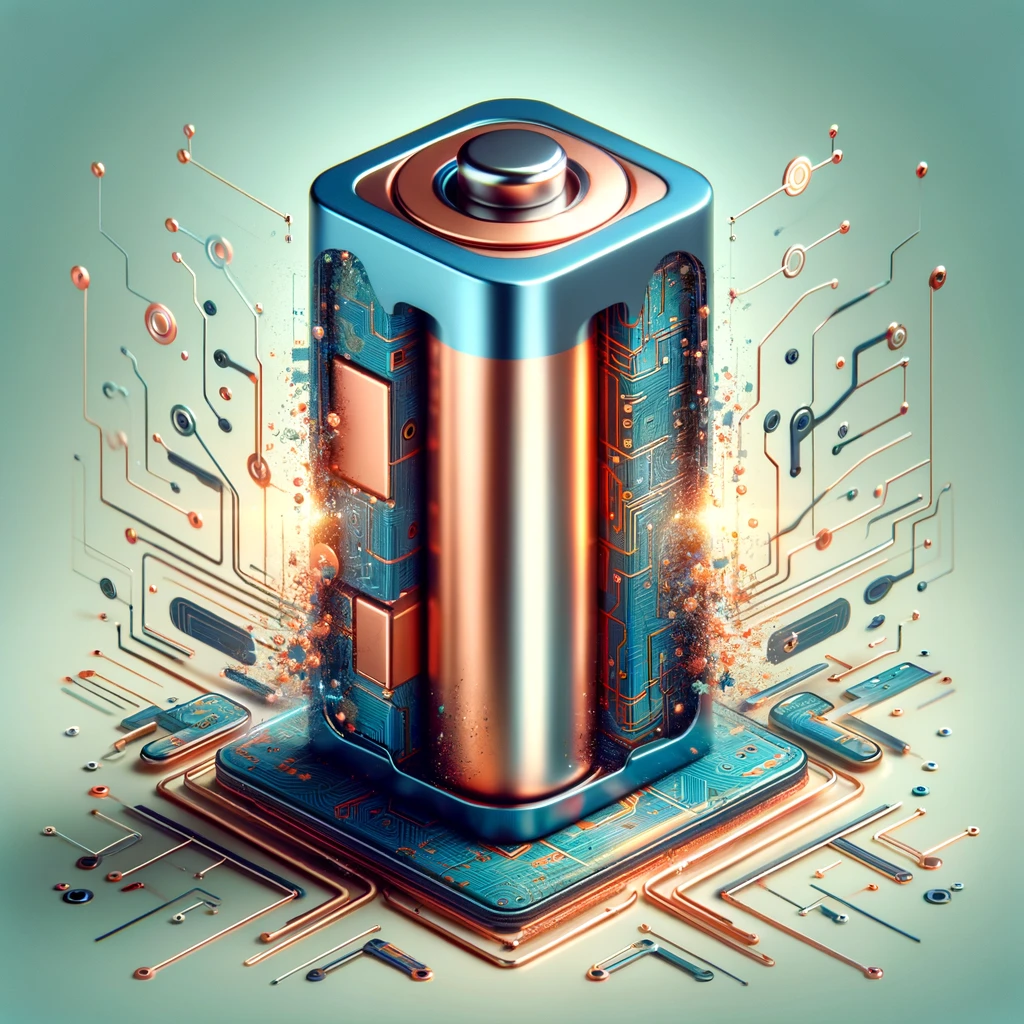In the realm of technological advancements, Electrodeposited (ED) copper foil has emerged as a pivotal material, particularly in the thriving Electric Vehicle (EV) battery industry. This thin, conductive sheet of copper is a critical component in the production of lithium-ion batteries, the powerhouse behind EVs. Understanding the intricacies of the ED copper foil manufacturing process sheds light on its significance and the innovative applications it enables.
The Journey of ED Copper Foil: From Electrolytic Bath to High-Performance Component
The creation of ED copper foil begins with an electrolytic process, where a thin layer of copper is deposited onto a rotating drum cathode immersed in an electrolytic bath. This process involves several key stages:
- Electrolytic Deposition: In the electrolytic bath, an electrical current is applied, causing copper ions to migrate from the anode to the cathode. As the drum rotates, a thin, uniform layer of copper is deposited on its surface.
- Foil Separation: Once the desired thickness is achieved, the ED copper foil is carefully separated from the drum cathode. The precise control of the electrolytic process ensures that the foil has a smooth surface and uniform thickness.
Pushing the Boundaries: Innovations in ED Copper Foil Production
Advancements in technology have revolutionized the ED copper foil manufacturing process, leading to significant improvements in quality and performance:
- Precision Thickness Control: Innovations in electrolytic deposition techniques have enabled manufacturers to achieve unprecedented precision in controlling the thickness of ED copper foil. This level of control directly impacts battery performance, as the optimal thickness balances conductivity and flexibility, contributing to battery longevity.
- Sustainable Manufacturing Practices: Leading ED copper foil manufacturers are adopting eco-friendly practices to reduce the environmental impact of production. These sustainable methods, such as using recycled copper and implementing energy-efficient processes, ensure that high-quality ED copper foil is produced without compromising the environment.
Tailoring ED Copper Foil to Meet the Demands of EV Batteries
To fulfill its critical role in EV batteries, ED copper foil must meet stringent requirements that ensure optimal performance:
- High Conductivity: ED copper foil’s exceptional electrical conductivity is essential for efficient energy transfer within the battery. Manufacturers employ advanced techniques to maximize conductivity, enabling faster charging and improved battery performance.
- Optimal Thickness: Achieving the perfect balance between conductivity and flexibility is crucial for battery longevity. ED copper foil manufacturers work closely with battery producers to develop foils with the optimal thickness, ensuring that the batteries can withstand the rigors of everyday use.
Ensuring Quality Through Rigorous Testing and Inspection
To guarantee the highest quality, ED copper foil undergoes a series of rigorous quality assurance checks at various stages of the manufacturing process:
- Purity Testing: Stringent purity testing is conducted to ensure that the ED copper foil is free from any impurities that could compromise its performance. Advanced analytical techniques are employed to detect even trace amounts of contaminants.
- Mechanical Property Testing: ED copper foil is subjected to a range of mechanical tests to evaluate its strength, flexibility, and durability. These tests simulate the stresses and strains that the foil will encounter during battery assembly and operation, ensuring that it can withstand the rigors of use.
ED Copper Foil: Powering the EV Revolution and Beyond
The impact of ED copper foil extends far beyond its role in EV batteries. Its unique properties make it a key player in various aspects of the renewable energy sector:
- Solar Energy: ED copper foil’s exceptional conductivity makes it an invaluable component in solar cells, enabling efficient conversion of sunlight into electrical energy.
- Wind Energy: In wind turbine generators, ED copper foil plays a vital role in efficient energy conversion, contributing to the reliability and performance of wind power systems.
- Energy Storage: ED copper foil is instrumental in energy storage systems, facilitating the storage of energy generated from renewable sources. Its stability and conductivity ensure that the stored energy can be efficiently discharged when needed.
Conclusion: ED Copper Foil – A Catalyst for the Renewable Energy Revolution
The production and application of high-quality ED copper foil lie at the heart of the renewable energy revolution. Its role in EV batteries and beyond is a testament to its versatility and indispensable nature in our journey towards a sustainable future.
As we continue to push the boundaries of technology and sustainability, the importance of ED copper foil will only continue to grow. By understanding and appreciating the manufacturing process behind this crucial component, we can better harness its potential to power the innovations that will shape our world for generations to come.



